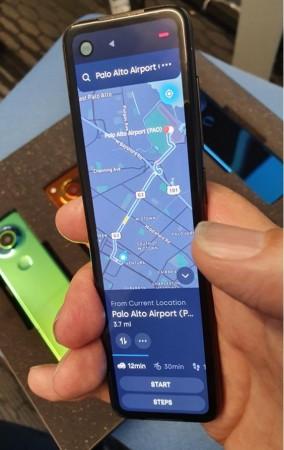
Flutter has taken the app development world by storm. With its single codebase approach, it promises beautiful UIs and cross-platform compatibility. But is it the right tool for every job? Let's explore when Flutter shines and where it stumbles, using the experience of Ayush Vijaywargi, a developer at Essential Products.
Flutter's Sweet Spots: UI Extravaganza and Decoupling Delight
Ayush leveraged Flutter to build core apps for Essential Products' hardware devices, including the Gem (running on Android) and their Home Automation Device (running on custom OS). These applications, ranging from a Spotify client to essential utilities like Clock, Contacts, Maps, and even the Over-The-Air update app, thrived with Flutter. The framework excels at creating stunning and visually consistent UIs across platforms. This consistency eliminates the need for platform-specific UI development, saving time and resources.
Furthermore, Flutter decouples the UI from the underlying operating system. This empowers developers like Ayush to focus on building a cohesive user experience without getting bogged down in the intricacies of each platform. Imagine a scenario where you have to build separate UIs for an Android and iOS version of the same app, each with slightly different layouts and functionalities due to system limitations. With Flutter, you can create a single UI codebase that adapts to the target platform while maintaining a unified look and feel.
The Achilles' Heel: When Native Matters
However, things took a challenging turn for Ayush when he approached apps like the Dialer. These applications rely heavily on deep integration with the device's core functionalities. Imagine using a phone where making a call introduces a lag because the app needs to communicate with the native APIs through Flutter's abstraction layer. This not only impacts performance but also creates a frustrating user experience. Additionally, maintaining code for features like call quality, real-time text (RTT), and conferencing became a tangled mess due to the constant translation between Flutter and the native OS APIs.
Ayush's smart decision to switch to a native Android app for the Dialer highlights a crucial point: Flutter's abstraction layer, while offering convenience, can become a bottleneck for functionalities that depend on raw system access. In such cases, native development offers a more direct and efficient approach.
So, When Do You Flutter?
Here's a cheat sheet to guide you:
- Embrace Flutter for: Building apps with a focus on UI consistency across platforms (think social media apps or music players). It's fantastic for MVPs (Minimum Viable Products) where a great first impression is key.
- Consider Native Development for: Apps that heavily rely on device functionalities like the camera, Bluetooth, or NFC. If low latency and deep system integration are crucial, native development remains the champion.
Beyond Phones: Flutter Takes Flight
Remember the slick new Ubuntu desktop installer? Yes, that smooth user experience was built with Flutter! This showcases Flutter's potential beyond mobile apps. It can be a great choice for building user interfaces for embedded systems, wearables, and even desktop applications. Here's the showcase with stories from other companies like Google and Betterment that have adopted flutter in production apps.
The Verdict: Flutter is a Powerful Tool, But Choose Wisely
Flutter offers a compelling development experience, but it's not a one-size-fits-all solution. Understanding its strengths and limitations, like Ayush did, is key to building exceptional applications. For UI-driven experiences, Flutter soars. But when deep system integration is paramount, native development remains the native choice.

















